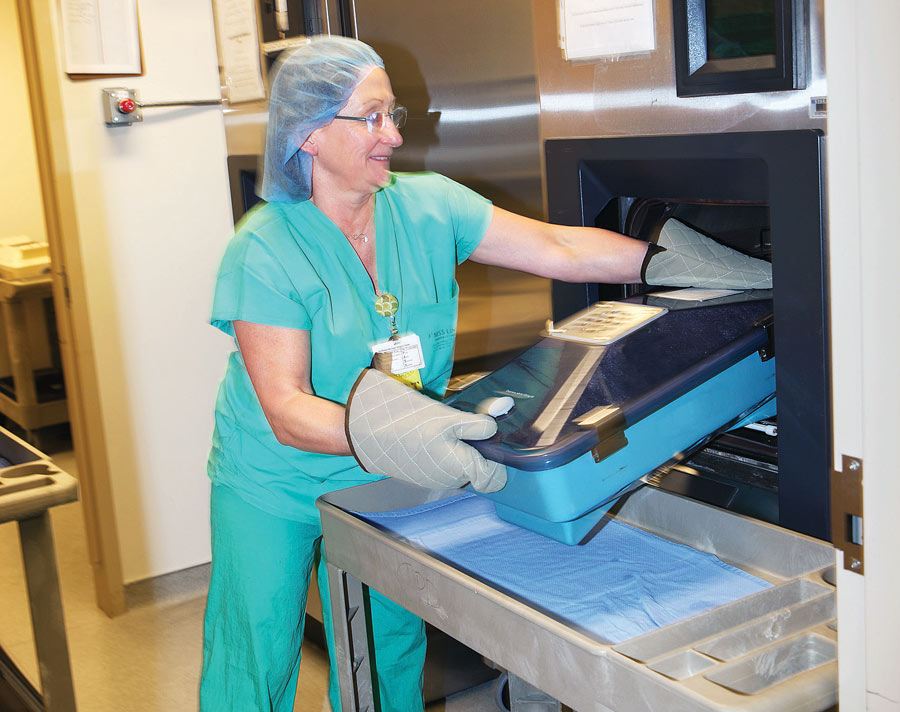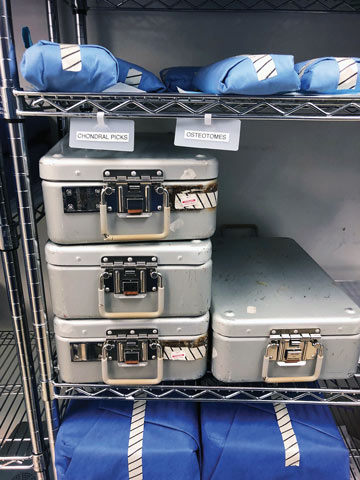The No. 1 benefit of rigid containers? That’s easy. They eliminate the punctures and tears of “torn-wrapper” syndrome, which gives you added assurance that your instruments are sterile and protected. Running a close second? Containers reduce mounds of discarded blue wrap. Here are 5 more advantages worth considering.
1 They’re stackable. Rigid containers aren’t susceptible to compression, so you can stack them and conserve precious shelf space in storage. But what happens when you stack wrapped trays? The ones underneath can develop air pockets and holes from the weight and pressure. A note about stacking containers: You’re not playing Jenga. Stack 2 or 3 high. Not only will this increase stability to prevent containers from falling over, but it will also facilitate first-in, first-out rotation.
2 They’re less time-consuming. Packaging in containers can be quicker than wrapping. No matter how efficient your processing technicians are, wrapping and taping instruments adds time to the process — especially larger containers.
.svg?sfvrsn=be606e78_3)


.svg?sfvrsn=56b2f850_5)